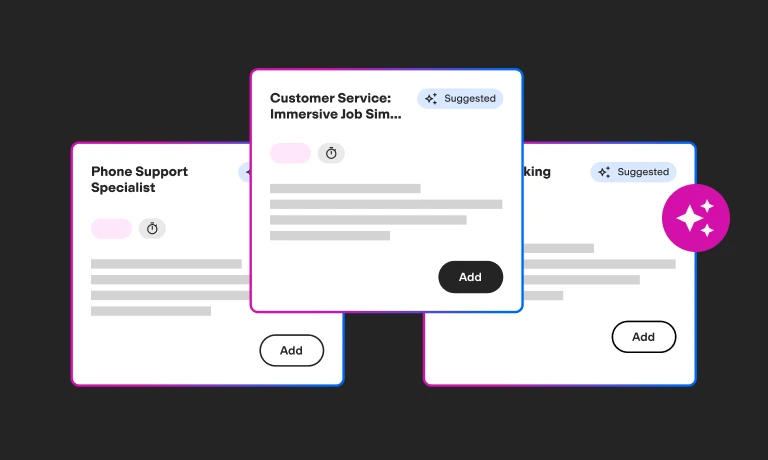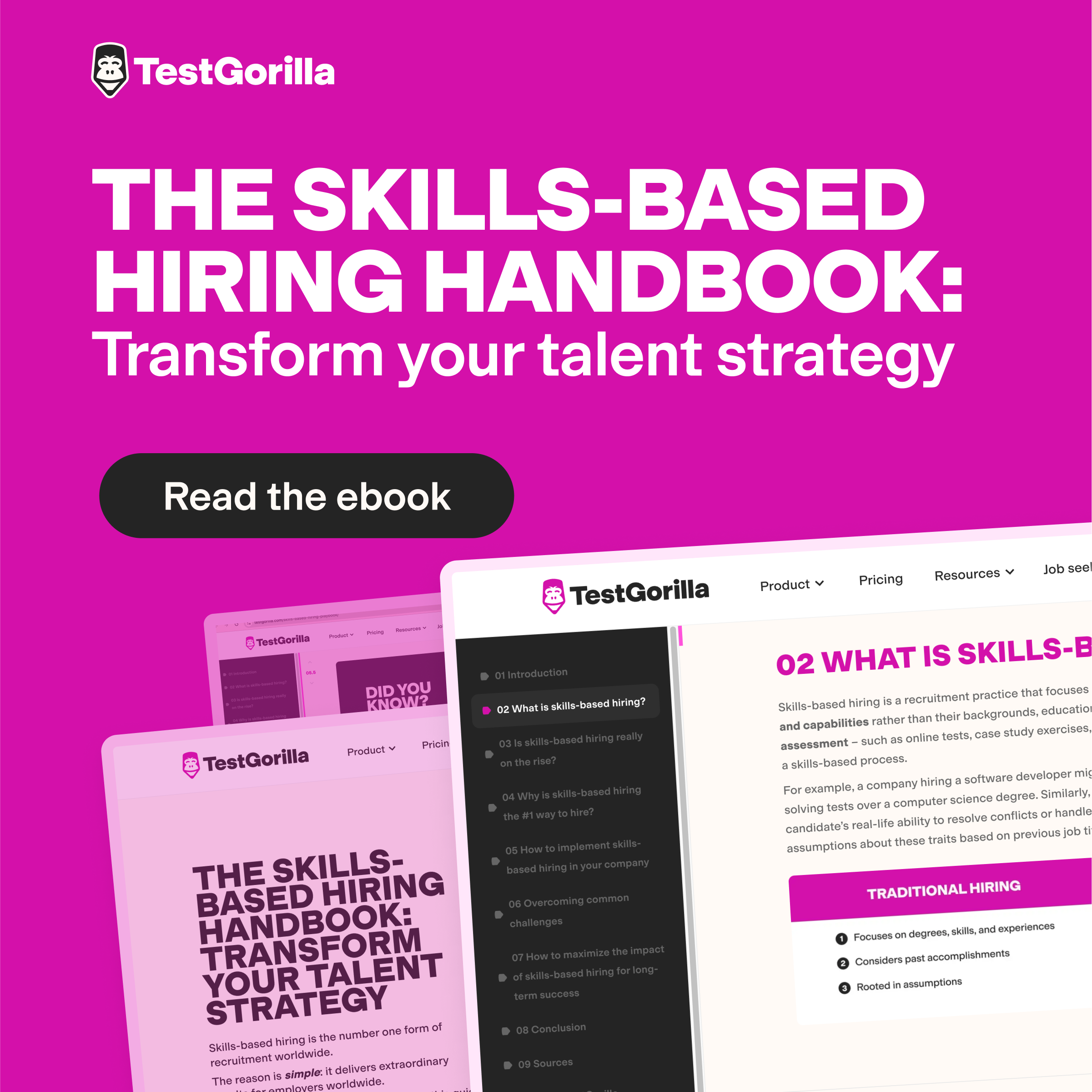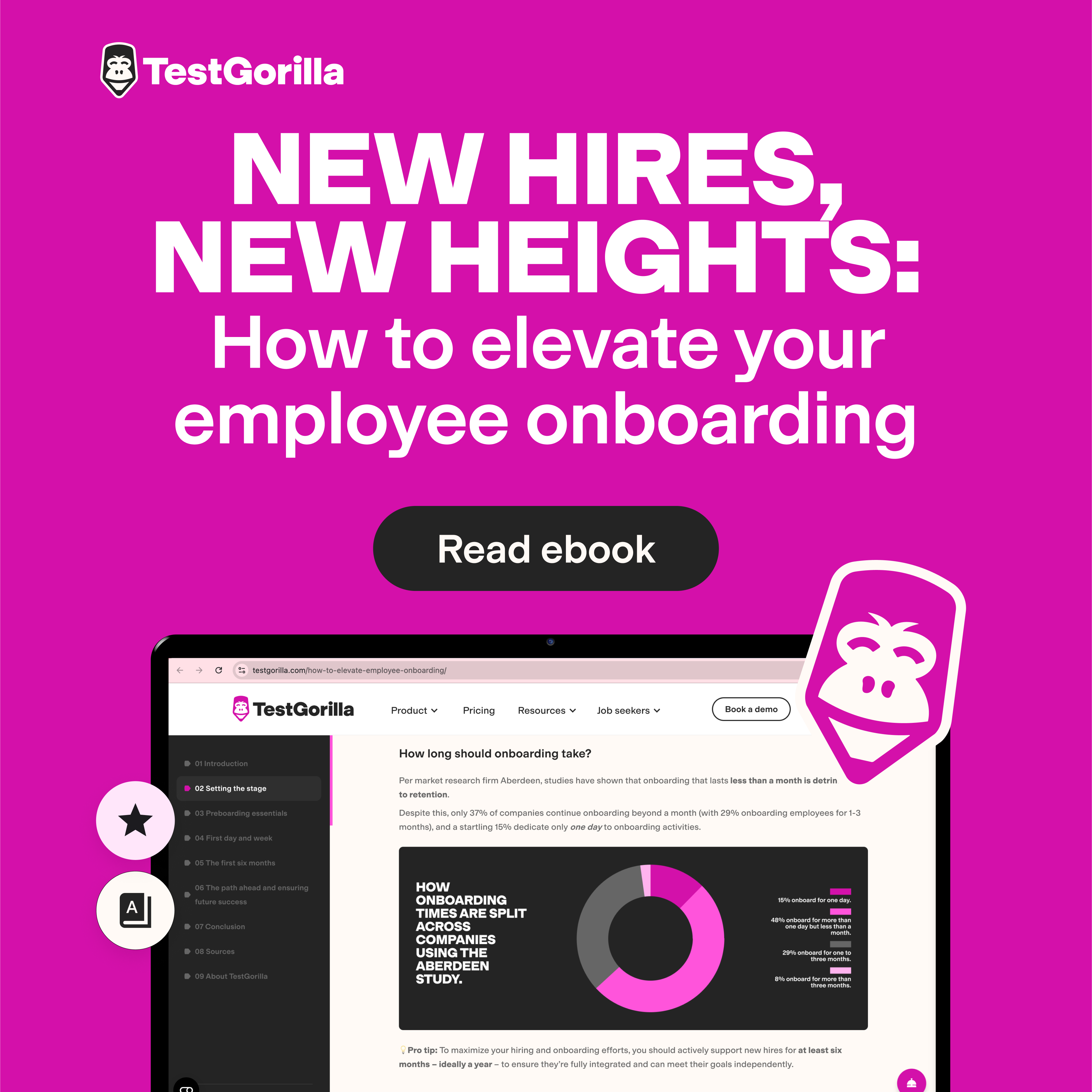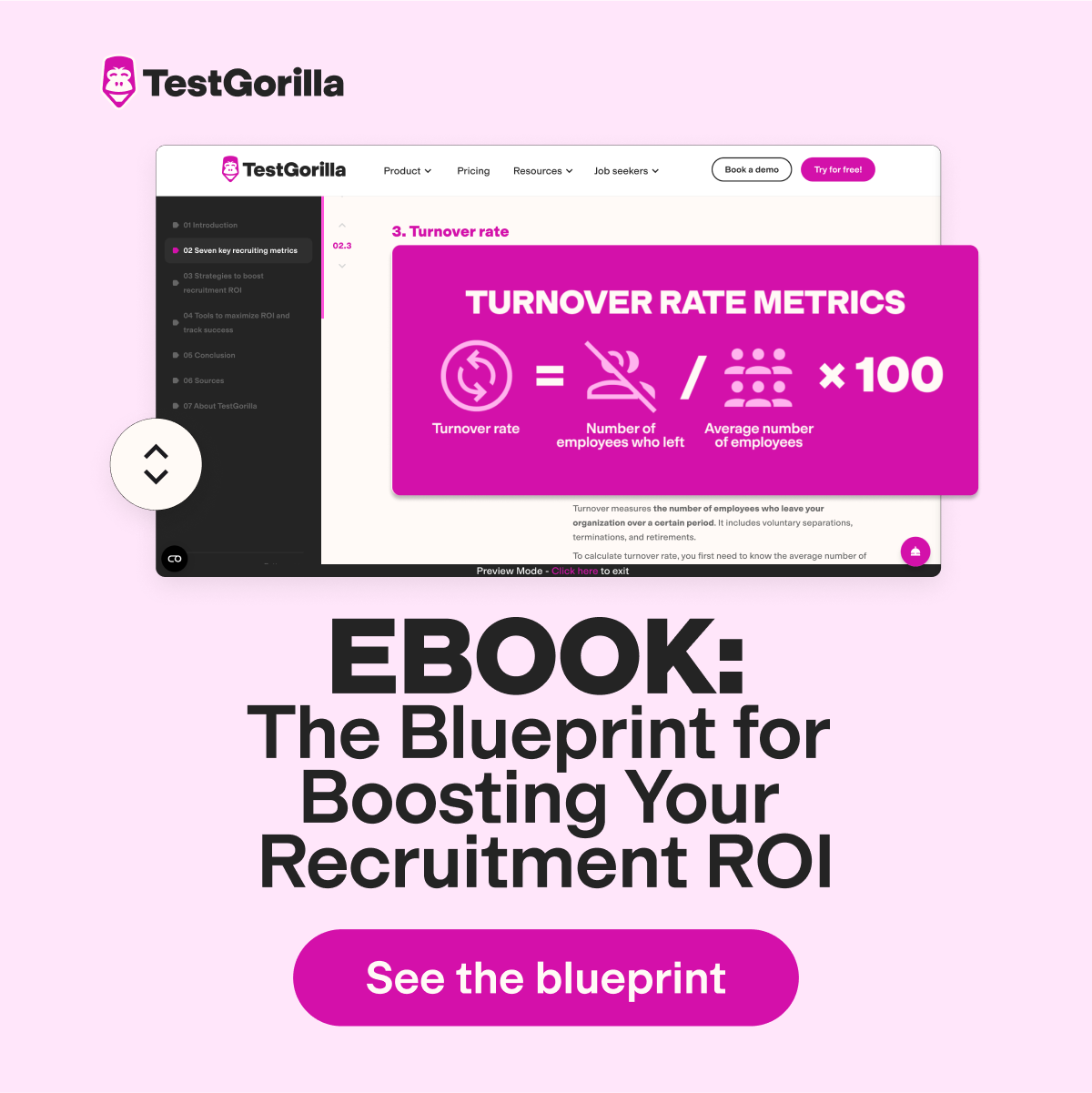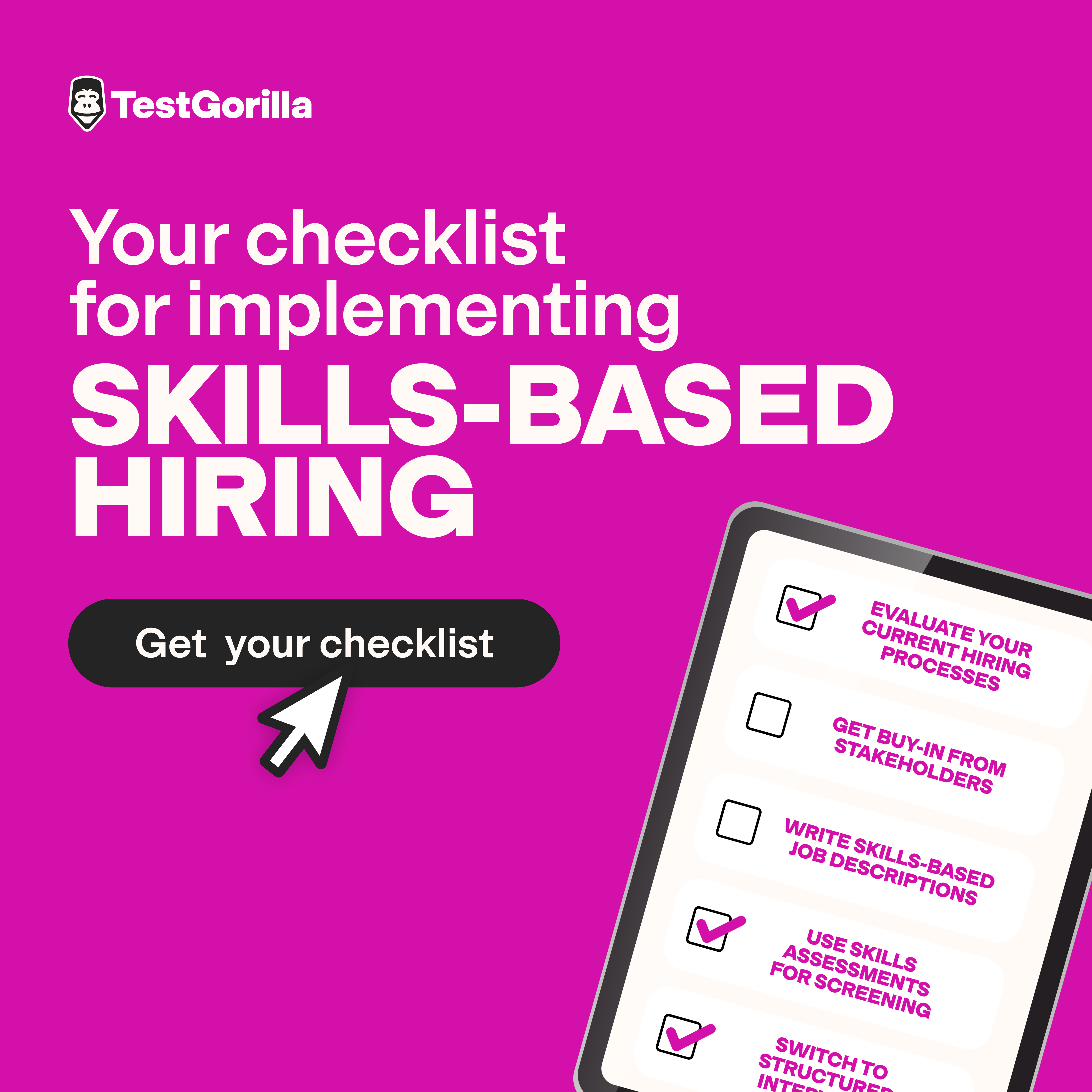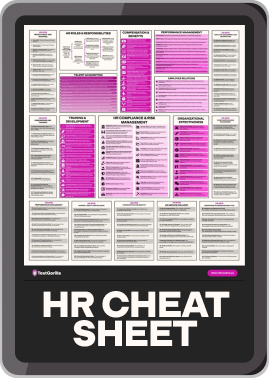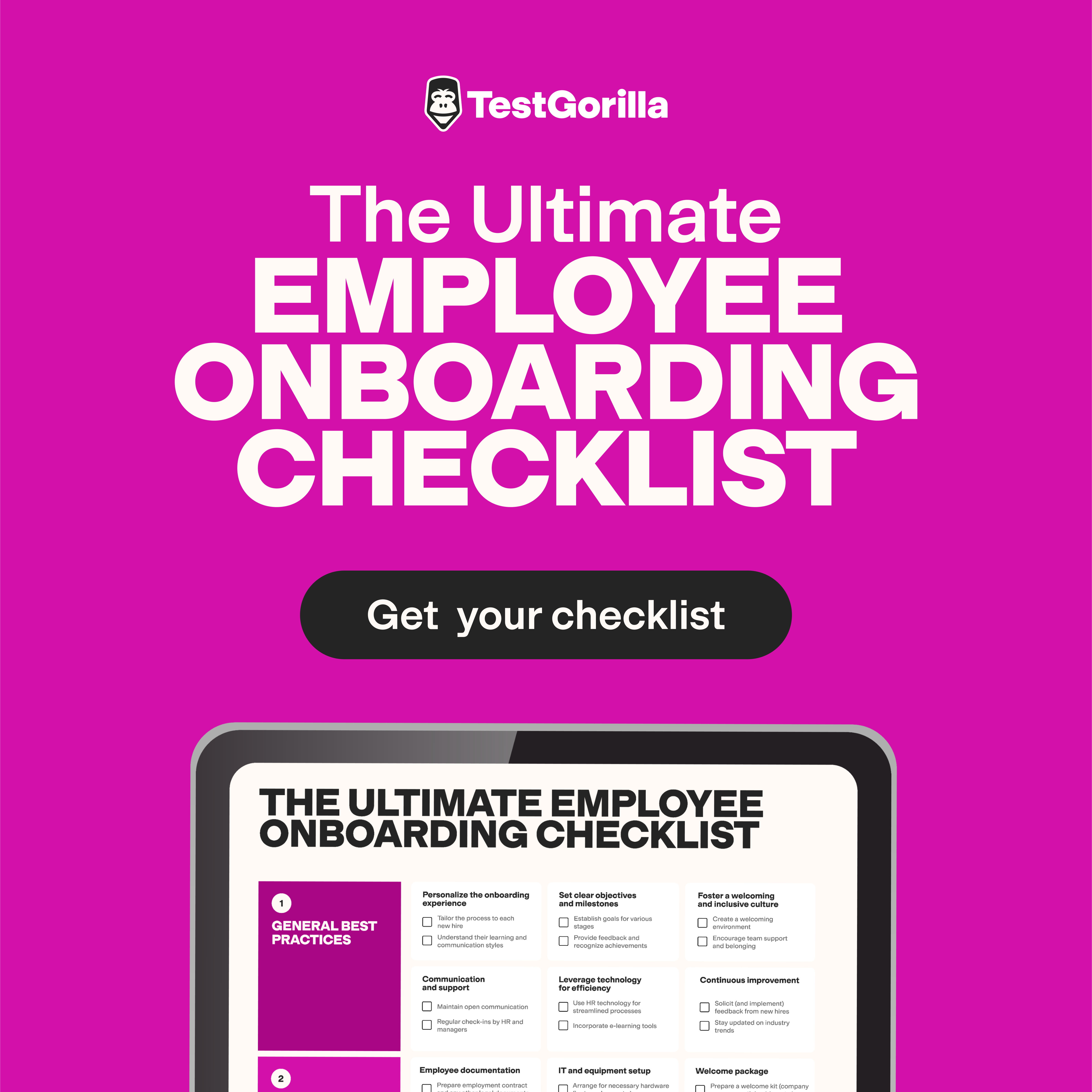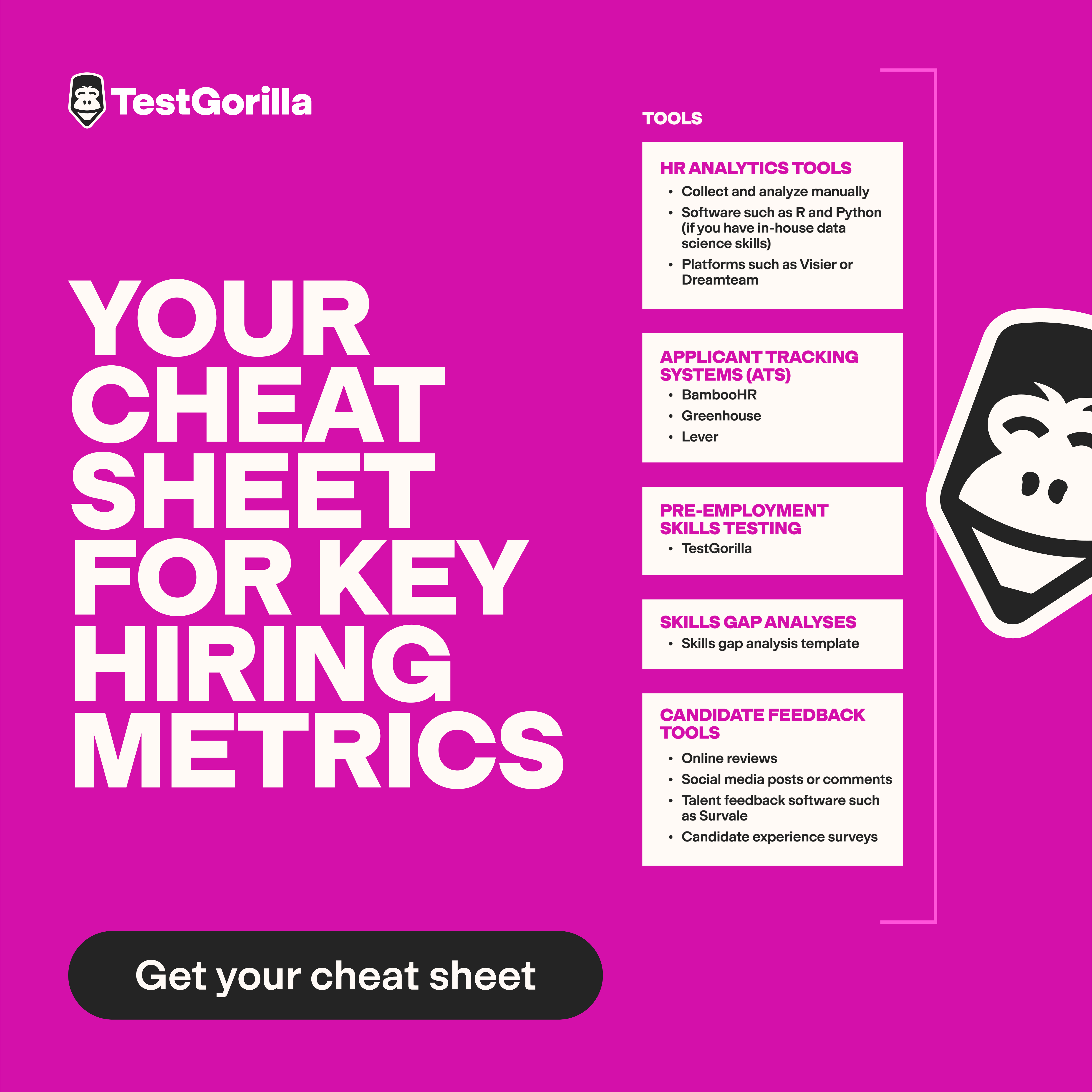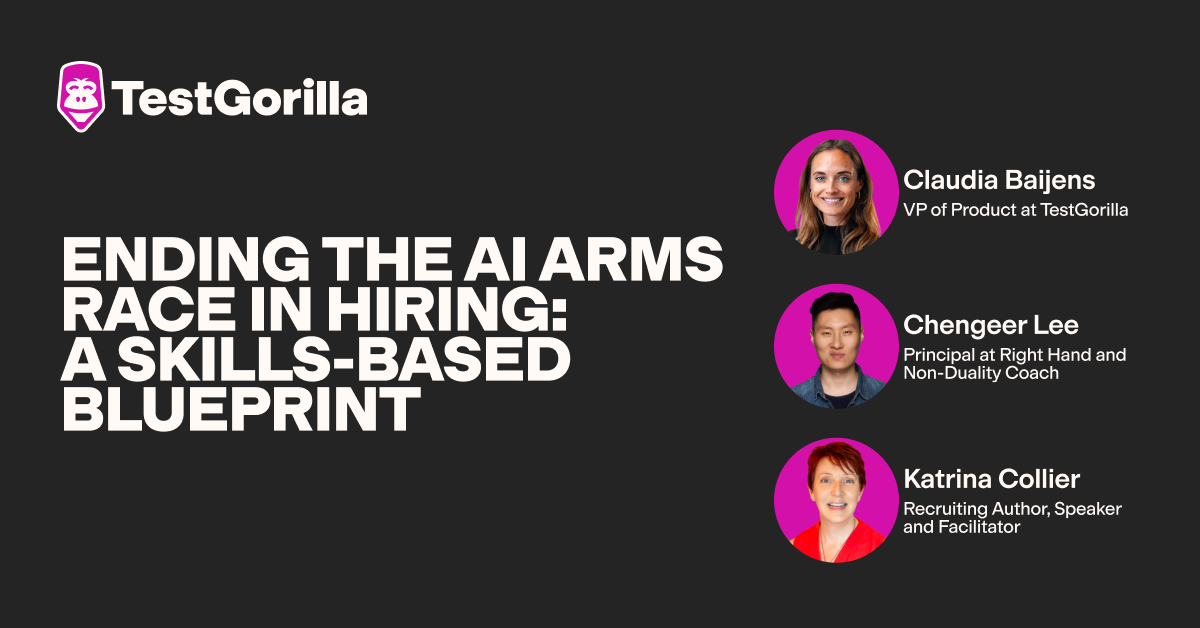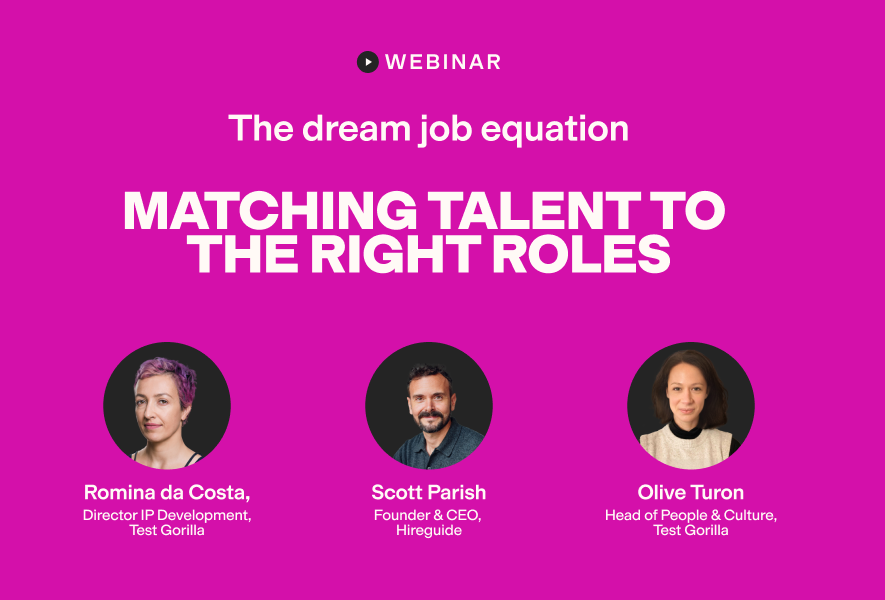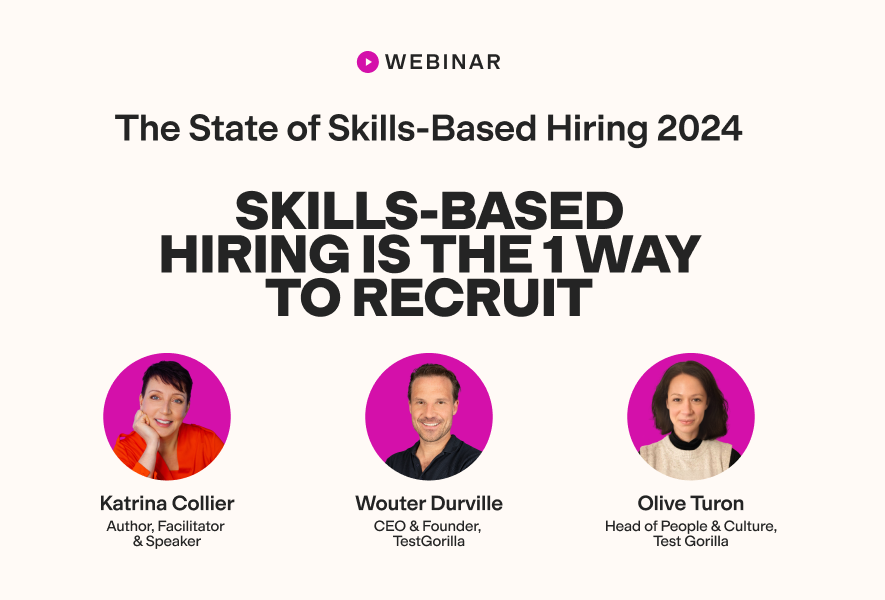How to build a skills-based organization: A step-by-step guide to success
Still relying on highly defined roles and fancy job titles? While these may have been the gold standard in the past, they’re outdated and damaging in today’s fast-moving world.
The smartest companies know they must stay agile – they’re ditching the old playbook and transitioning to what’s known as a skills-based organization. Skills-based organizations are reshaping the future of work. I believe they are the future – and you could seriously lose out if you don't pay attention.
Not sure what all this means? Don’t worry. Below, I explain what a skills-based organization is, outline its key benefits, and provide easy-to-follow guidance.
What is a skills-based organization?
A skills-based organization places employees’ skills at the heart of its organizational strategy, including roles, workforce planning, culture, and decision-making.
Traditional companies usually have established roles/jobs like marketing, sales, tech, and so on – each with a specific job description. These roles are filled by existing employees or new hires with relevant degrees, job titles, or experience in their respective fields.
In a skills-based operating model, traditional roles/jobs are broken down into smaller projects and tasks, which are assigned to employees based on their real-world skills and abilities instead of their job titles, education, previous experience, etc.
For instance, a skills-based organization might break down a marketing role into specialized tasks such as SEO marketing, social media management, design, and branding.
Employees are assigned to these tasks only if they have or learn the specific skills required to do them – and not just because they've got a marketing degree or had some marketing experience before.
This helps make the most of your resources and matches employees to jobs they can shine in.
Here's how skills-based organizations differ from traditional organizations.
| Traditional org | Skills-based org |
Frameworks used | Hierarchies and titles | Skills and competency maps |
Properties of roles | Traditional established roles with fixed job descriptions, based on the company's initial objectives | Smaller projects and tasks, which may be short or long-term depending on the company's evolving needs. |
Hiring or role assignment | Based on degrees, job titles, previous experience, and seniority | Based on real-life skills, aptitudes, and capabilities |
Employee development | Linear and role-specific career paths, such as gaining seniority in the same type of role or department | Flexible development plan, including upskilling, reskilling, and cross-skilling based on company needs and employee preferences |
Performance | Often based on tenure or output | Based on application of skills and growth |
Proof that more companies are becoming skills-based
Deloitte surveyed over 1,000 employees and 225 businesses worldwide and across industries and interviewed about a dozen executives. The findings were crystal clear. There's a strong move toward becoming skills-based organizations, and both workers and leaders prefer a skills-based model over one based on jobs.
Why are skills-based organizations so powerful?
Here’s why I think switching to a skills-based organization is non-negotiable.
1. Keeps you in the race
Skills-based orgs maximize their resource use and assign tasks to the employees most skilled for the job and most likely to excel. Naturally, this leads to better performance, higher output, faster turnarounds, and fewer mistakes.
Deloitte’s research showed that skills-based companies are 63% more likely to achieve desired business results than those with traditional job-based approaches.
So, are you still placing people in roles based on their degrees or past job titles and hoping they’ll get up to speed at some point? In my opinion, you simply can’t catch up with these skills-based pioneers.
2. Helps you thrive no matter what
The world is changing at record speed – whether it’s tech advancements, shifting consumer preferences, a move toward sustainability, or something else. Yesterday’s skills and knowledge might not be relevant today, and today’s expertise could be obsolete tomorrow.
I’m not just saying this. The World Economic Forum’s Future of Jobs report predicts that 44% of skills will be disrupted over the next few years.
The best companies can adapt quickly to evolving situations. Skills-based organizations are perfectly set up to do this by reassigning skilled employees to where they’re needed most without the constraints of job titles.
For example, the Copper Rivet Distillery gained popularity during the COVID-19 pandemic for pivoting from producing gin and whiskey to hand sanitizer for emergency services.
With employees who likely knew the distillation and quality control process and just needed a bit of training on the new product and relevant regulations, this company stood out for its adaptable approach and was recently mentioned in the BBC.
3. Leads to happier and healthier employees
According to Gallup, employee engagement has dipped to its lowest point in a decade! Employers are quick to point fingers at everything – COVID-19, Gen Z, social media – except themselves.
My take? Employers must look internally at what they've got wrong. They have a duty to set their employees up for success, and skills-based organizations are already on the right track.
Skills-based companies match employees to work that makes the most of their skill sets. These employees are more likely to feel their talents are being used effectively, leading to higher engagement and job satisfaction.
One compelling study even linked skill utilization to better physical health outcomes in employees.
4. Helps you attract, engage, and retain top talent
Skills-based organizations also prioritize upskilling and reskilling. They give employees new challenges that help the company and push those employees to grow and advance their careers within the company.
And research published in Wharton Online showed that 68% of workers believed upskilling opportunities were crucial when considering a job, and nearly 50% said they’d switch jobs for an employer that provided better training opportunities.
Additionally, a recent survey published in the Harvard Business Review found that employees who get professional development opportunities are 15% more engaged and 34% more likely to stay with the company long-term.
5. Makes you look good in the job market
Employees want to work for companies that value their skills, make the most of their strengths, and encourage growth. This can be a strong differentiator in competitive job markets and encourage candidates to apply to your company over others.
For example, in our recent survey of over 1,000 employees, we found that more than eight in ten job candidates prefer a skills-based hiring approach to a traditional one because it gives them a chance to demonstrate their skills.
6. Promotes equity
According to Deloitte, 80% of business executives felt making decisions about hiring, pay, promotions, succession, and allocation of work based on skills rather than job histories and tenures could reduce biases, improve fairness, and make access to opportunities equal to all employees, regardless of demographics.
I think it's high time we stop chatting about our DEI goals and start acting on them – and this is a great framework for this.
The best insights on HR and recruitment, delivered to your inbox.
Biweekly updates. No spam. Unsubscribe any time.
How to build a skills-based organization in 7 steps
Whether you're starting a new company or looking to change the way you operate, here's how you can transform your business into a skills-based organization.
Step 1: Define (or redefine) tasks and responsibilities
Instead of sticking with the popular role titles and job descriptions that old-school companies use, go back to the drawing board by establishing which jobs and tasks are most relevant to your company. Define/redefine your company’s short and long-term vision, and then map out your journey to achieving your goals.
Take, for example, a mom-and-pop shop that wants to go completely online by the end of the year. How will it get there? The company will need to get rid of its physical location, build an online store, attract new customers, encourage existing customers to visit their website, figure out deliveries, and so much more.
Next, for each of these, consider what tasks need to be done – for instance, finding a buyer for the property, product sourcing, website development, inventory management, customer service, payment processing, digital marketing, data analytics, and so on – and deconstruct these even further.
For instance, you might break customer service down to response management and issue resolution. Now, create a list of all the tasks your company needs to achieve its objectives.
Step 2: Create a skills map
Outdated workforce planning involved a process called a job-task analysis, where you take a job role – for instance, recruiter – and identify the duties and responsibilities it covers, such as sourcing candidates, conducting interviews, and onboarding. The job is defined by the duties it covers.
In a skills-based approach, you take the list of tasks created in step one and identify which specific skills and competencies are required to complete them to create a skills map.
For instance, a recruitment task wouldn't be defined by its duties but by skills like familiarity with applicant tracking systems, good communication and organization skills, and knowledge of labor laws.
You can map skills by speaking to subject matter experts, analyzing existing job descriptions, tapping into employees' knowledge, and even looking at what skills your competitors are valuing. Importantly, you must create a skills map showing which tasks require which skills for all key tasks and projects your company must complete.
Pro tip: Skills-based organizations looking to take things to the next level can create a skills ontology, which also shows the relationships between different skills.
Step 3: Build your organization's skills inventory
A skills inventory is a detailed database that lists all the skills, competencies, and qualifications available in a company’s workforce. As tedious as it sounds, it’s totally worth it because it'll come in handy in everything from spotting skills gaps to creating learning and development paths and even succession plans in your company.
Here’s the data you should collect.
Personal information like employees’ names, departments, managers, and existing job titles
Employees’ skills, including hard skills like software proficiency, soft skills such as communication, and even personality traits like open-mindedness
Workers' skill levels, such as basic, advanced, masters, etc. (depending on the terminology you want to use)
Professional licenses, certifications, and qualifications the employee possesses, particularly if the nature of the work requires these by law – for instance, in healthcare
While you can lean on employees’ resumes and company profiles to complete these, make sure they’re vetted by employees and their managers. You can also give your workers employee skills assessments and use the scores to verify their skills and skill levels. Also, keep your skills inventory updated – for example, by adding new skills based on employees’ training histories.
Need more help? Read our complete guide to creating a skills inventory for your organization.
Step 4: Match your talent and identify skills gaps
Now, you have all the data, and you must match your talent to the tasks you’ve identified.
This involves taking the skills map, which outlines all the skills needed for different tasks, and comparing it to your skills inventory – the comprehensive list of skills available in your current workforce.
Here are some of the possible scenarios you’ll encounter during this exercise and how to tackle them.
Scenario | Description | Action Items |
Skills match | Employees' skills align well with the tasks and projects they’re currently working on.
| Maintain: Continue monitoring and provide ongoing learning and development opportunities to keep skills sharp. |
Skills mismatch | Employees' skills don’t align with their current projects and tasks. | Talent mapping: Reassign employees to roles that better fit their skill sets. Consider targeted training to ensure they’re fully equipped to take on new roles. |
Underutilization of skills | Employees have skills that aren’t being used effectively. | Skills optimization: Identify new tasks or projects where these skills can be utilized. If these don’t exist, consider upskilling or re-skilling programs, which can help employees develop skills that are better suited to the company’s needs and goals. |
Skill shortages | The skills needed to complete tasks are absent from your current team.
| Recruitment or outsourcing: Consider hiring new talent or outsourcing certain tasks to freelancers or gig workers to fill these critical skill gaps. |
Step 5: Adopt a skills-based hiring process
A big part of becoming a skills-based organization is changing how you hire. Unlike traditional hiring, which prioritizes degrees, job titles, backgrounds, and years of experience, skills-based hiring focuses on candidates’ real-life skills and capabilities.
By doing this, you hire people who have the exact skills you need to complete the most critical tasks in your company. Plus, you also open your doors to a wider talent pool comprising anyone who’s acquired the required skills, even if they don’t have degrees or fancy job titles. And you get rid of hiring biases, leading to data-backed candidate selections.
According to our latest The State of Skills-Based Hiring Report, where we surveyed over 1,000 companies:
81% of employers use skills-based hiring, up from 73% in 2023 and 56% in 2022
95% agree that it’s the dominant recruitment method of the future
98% of employers agree that skills-based hiring is more effective than relying on resumes
90% have reduced mis-hires, up from 88% last year
Here’s how you can switch to a skill-based hiring approach:
Say goodbye to traditional job descriptions
These define a job by its responsibilities and make assumptions about ideal candidates’ degrees or experience. Instead, opt for skills-based job descriptions that define jobs by the skills needed to achieve them.
Swap resumes for multi-measure testing
Resumes may list a candidate’s skills and experiences, but there’s no way to verify how these play out in reality and if they’re fully relevant to your company’s unique needs.
Multi-measure testing, on the other hand, puts candidates through a range of online tests that measure the hard and soft skills, cognitive abilities, behavioral traits, and values required for a job and your company. This all-rounded and data-driven view is a much quicker and better way to screen candidates.
Use structured interviews
This means asking all your shortlisted candidates the same set of questions in the same order and using the same criteria to score responses – ensuring the interview focuses on skills and behaviors rather than getting into off-topic discussions, which could cause biases.
Step 6: Put skills at the heart of your company's culture
Fostering a skills-based culture isn’t just about updating HR practices. It’s about changing your company’s core values, views, and ways of working.
Encourage continuous learning by providing ongoing education and professional development opportunities through training courses, hands-on workshops, subsidies for certifications and other relevant courses, and so on. I recommend tying skills development to performance management.
Celebrate skills achievements openly and often – for instance, through regular shout-outs in team meetings, recognition in town halls, awards like “best learner of the month,” or visible career advancements linked to skills development.
According to a Deloitte report, 74% of employees and 78% of leaders favor a system where pay and rewards are based on how effectively employees use and develop their skills and competencies over linking comp to jobs, level, and output. Additionally, more than seven in ten workers believe skills-based pay would improve their experience at work.
Make sure every employee knows what skills are valued, where they fit into company goals, and what training opportunities are available to enhance skills visibility and accessibility in your company.
Step 7: Review your methods and keep your frameworks updated
There’s no point going through all of the above if you don’t measure the success of your efforts or keep your frameworks up to date.
Conduct quarterly reviews of your company’s goals, relevant tasks, skills maps, and skills inventories, updating them if necessary. This is the only way you’ll stay agile and able to adapt quickly to new challenges and opportunities. Plus, it helps you spot and fill skill gaps quickly.
Don’t just rely on what’s happening in the market to define the tasks and skills you need. Keep employees in the loop and use their feedback to adjust your approach.
Finally, set clear metrics to define what success in your skills-based operating model looks like. These could include employee engagement scores, customer satisfaction scores, faster project completion, and other data points and business outcomes relevant to your goals.
Where something isn’t working, dig deeper to understand why – for instance, through employee surveys – and adjust accordingly.
Close skills gaps and boost agility with a skills-based approach
A skills-based organization gets rid of rigid job structures and sticky job titles. This helps you quickly respond to challenges and opportunities by re-allocating employees to where their skills can be maximized rather than keeping them in restricted roles – boosting employee engagement and retention.
So, why wouldn’t you become a skills-based organization?
To adopt this approach, consider your company's goals and break down the tasks and relevant skills needed to achieve these. Track your workforce's existing skills and match employees to jobs that make the most of their abilities. Use skills assessments to fill any talent gaps, put skills at the center of pay and performance decisions, and keep your frameworks current to reap the fruits of your labor.
Related posts
You've scrolled this far
Why not try TestGorilla for free, and see what happens when you put skills first.




